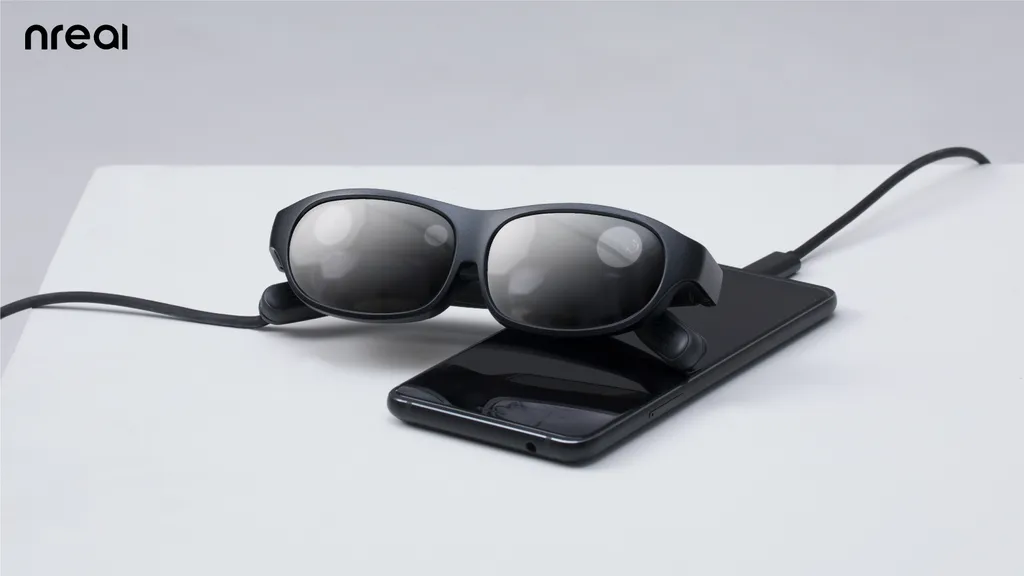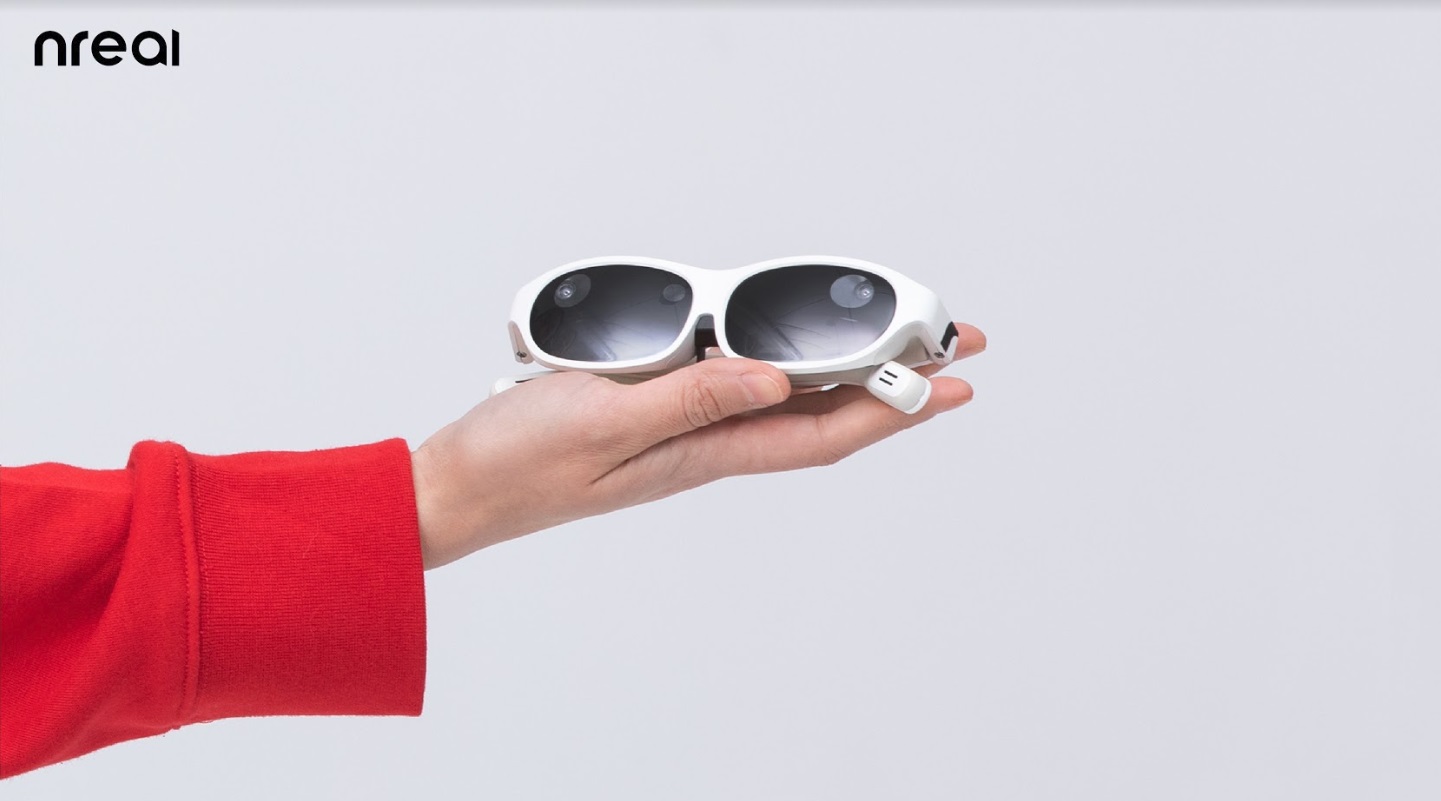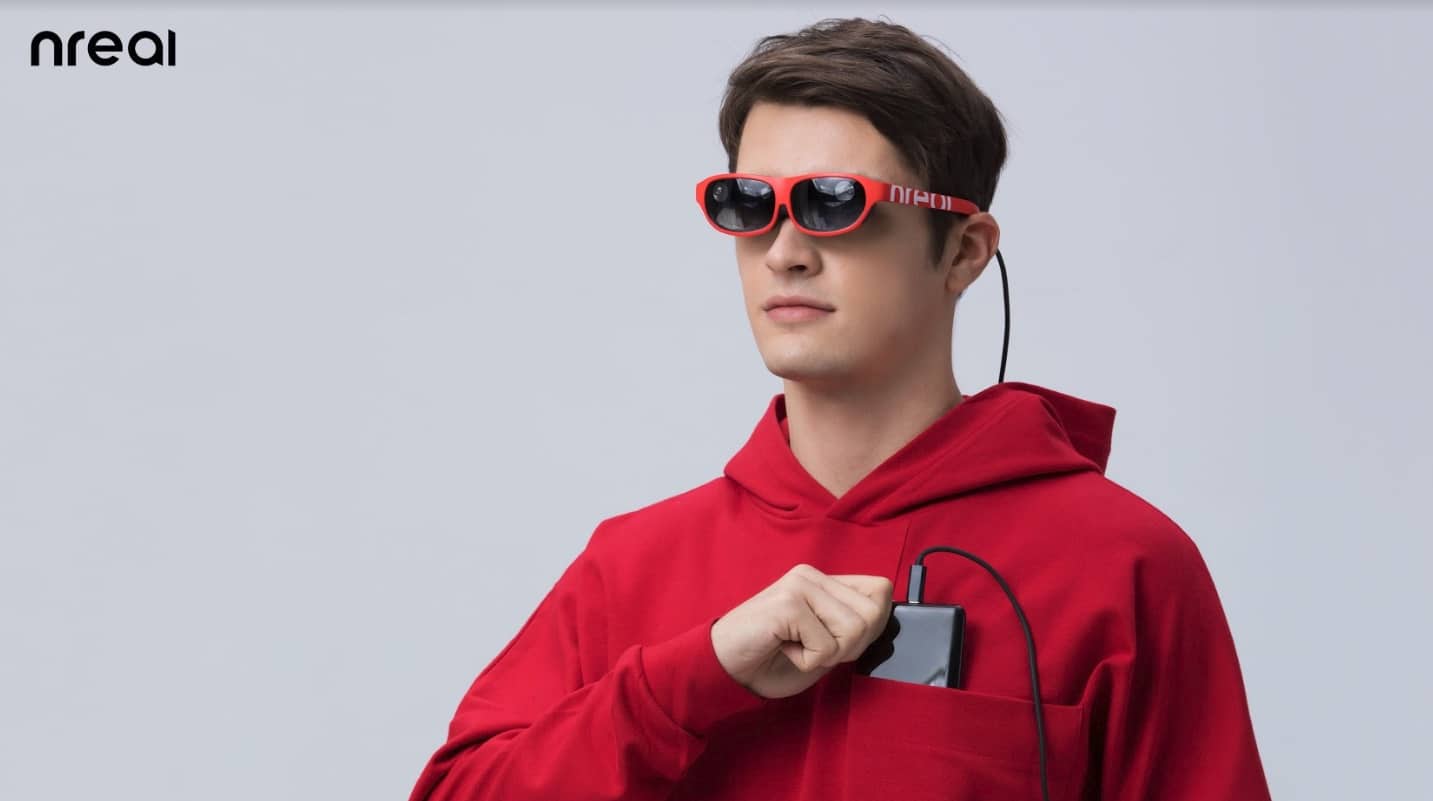I’ve learned to be weary of sunglasses. Not because I doubt their ability to keep me from going blind on sunny days, but because of AR. An AR headset that resembles a pair of light specs is the holy grail of immersive design. But an exhaustive number of companies are now billing sunglasses with simple 2D overlays as ‘AR’. Nreal Light, however, might finally be the real deal. Or at least as close as we’ll get for now.
I got a quick look at the Light at MWC last week. It’s a little like a slimmer Magic Leap, with a headset design almost indistinguishable from a real pair of sunglasses. The trick, though, is that the headset gets its compute power from the smartphone in your pocket. Well, that is if you have a smartphone with a Qualcomm Snapdragon 855 chip. Otherwise, the kit can be powered by a computing unit with an 845 chip.
The concept is sound, though smartphone-based VR never really proved to be the market-maker some hoped it was. You’d forgive me for being somewhat hesitant to put the kit on, then. But in the end I was pleasantly surprised with the Nreal Light.
My first demo was a classic AR use-case; the virtual screen. A wide-angle football game captured by NextVR hovered in front of me. The Light’s lenses produced a sharp, clear image. The Qualcomm booth showing the gear was tiny, so it was hard to get the entire display into Light’s 52 degree field of view.
That said, tracking was solid (demos were notably directed toward a booth wall and not the busy show floor). I walked up to the screen and leaned in then backed as far away as I could without any noticeable blips in screen placement. I’m still not convinced I’d rather watch something in AR than real life, but this made a good case for it.
The next showcase was even more promising, though. I saw a quick slideshow of 3D sequences from dancers performing a routine to warriors battling out. Again, it all looked sharp and boasted solid tracking. My heart was really stolen by a closing demo of a kitten walking around on the floor, though. I crouched down to get a closer look as it stared back up at me. Though I knew my feline friend wasn’t really there, I couldn’t help but reach out to pretend to pet it. It was one of the most compelling AR moments I’ve had.
Perhaps the most noticeable part of the demo, though, was how comfortable this all felt. Nreal Light is slightly bulkier than a real pair of sunglasses but, at 85g, it was still much lighter than any other AR headset I’ve tried. The wire connecting the glasses to your phone seamlessly runs from the end of one of the temples, much like an earphone wire. Sure, they’re not ‘true’ sunglasses but I could easily see myself tucking the wire under my shirt to use the headset for a few hours. It’s a more than decent workaround until we get AR glasses with fully onboard compute.
It was a much better demo than I was expecting, though the booth was a bit too controlled for stress testing. A nearby assistant handled the Light’s 3DOF controller, for example. As I mentioned, the booth was also too small to really push the tracking and field of view to its limits.
Last week I labeled HoloLens 2 as an AR headset I’d actually use. I’d need to spend more time with Nreal Light’s wider features to give it the same distinction. From my quick demo, though, it’s on the right track.
Nreal isn’t yet talking about release dates and prices for the Light. The company did tell me that smartphone compatibility will be available out of the box.




























